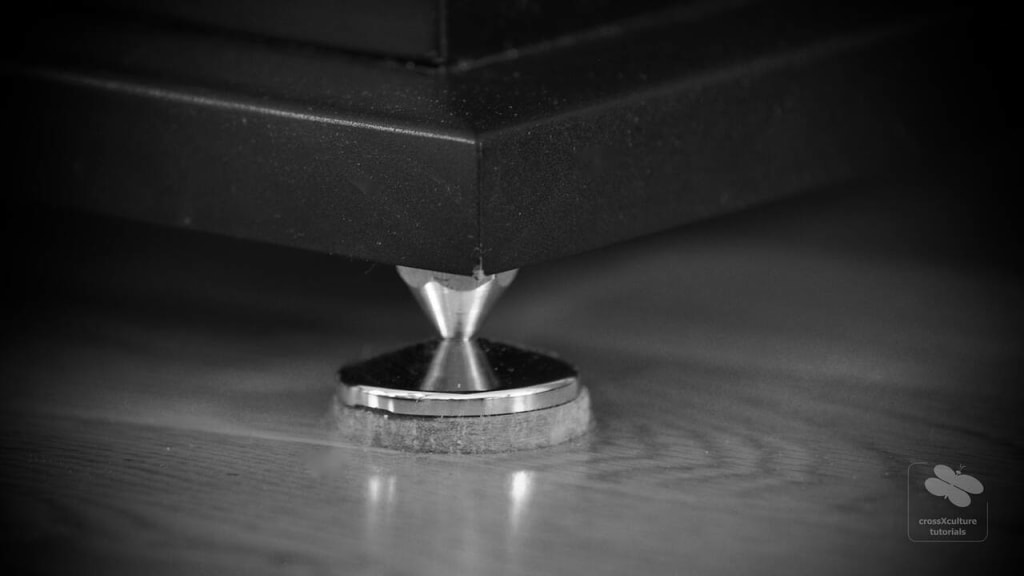17. Spikes or absorbers
Published: 12/05/2020
Author: Karsten Hein
Category: High Fidelity
When placing acoustic equipment in a room, there are many factors to be considered that will have an effect on our equipment’s ability to perform and on the specific sonic signature obtained. One such factor is the platform on which our equipment is positioned. In a perfect setup, desirable frequencies will be supported, while unwanted resonances will be reduced. The only question being: How can we distinguish between the two?
Loudspeakers are the most obvious devices within a HiFi system from which both desirable frequencies and unwanted resonances are emitted. In many cases, loudspeakers are sold without the addition of a specific coupling to the ground, and this does make sense, as the manufacturer has no control over the environment in which their product is going to perform. While it is often suggested that loudspeakers should be placed on spikes, to improve their sound, spikes will have a very specific effect that will only work, if the conditions are right.
For maximum frequency and resonance control, a loudspeaker should have a stable stand. To achieve this, the speaker’s weight is at best distributed between three or four couplings to the ground. If four couplings are used, at least one coupling must be height-adjustable to avoid wobbling. If three are used, they should be positioned relatively far apart to assure a stable stand. Among the many couplings conceivable, three types are the most common: spikes, anti-spikes, and absorbers.
In our own listening environment, I had first positioned the speakers flat on the hardwood floor, using non-height-adjustable 1mm felt pads. The sound was solid, but high frequency resolution was poor. The introduction of height-adjustable spikes and coasters brought instant clarity and direction to the music, but it also destroyed some of the homogeneity. Consequently, for quite some time it seemed to me that I had to make a choice between a well-balanced sound and maximum clarity. The spikes coupled the speakers so well to the ground, that the hardwood itself was in resonance with the speaker. To decouple the speakers from the floor, different methods and materials will work, also depending on the desired listening volume


